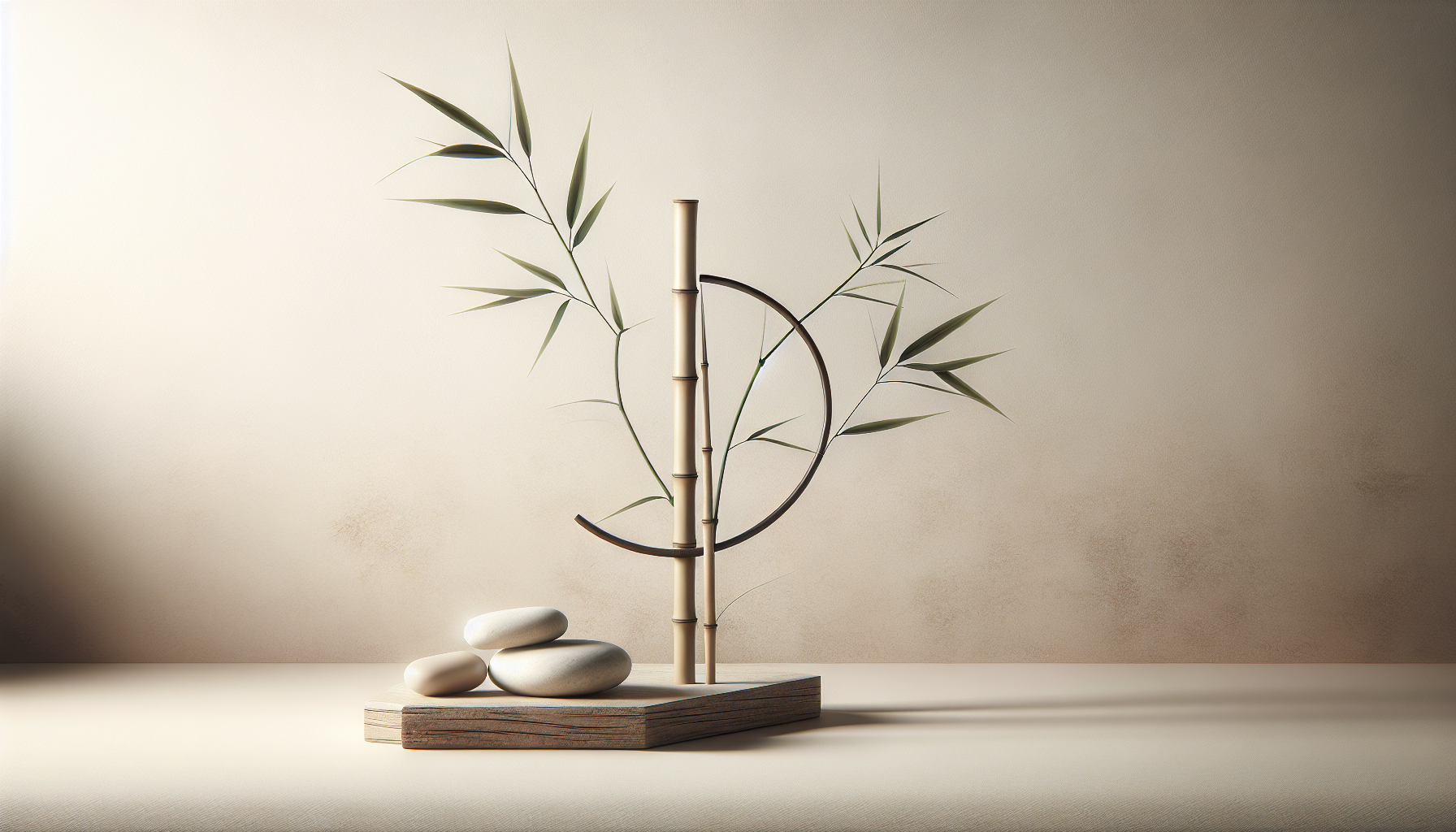Have you ever wondered what materials make up the beautiful and tranquil Japandi style? The fusion of Japanese minimalism and Scandinavian functionality creates a peaceful atmosphere that many people desire in their homes. However, it’s not just about aesthetics; sustainability is crucial. Let’s take a closer look at the most sustainable materials used in Japandi design and how you can incorporate them into your space.
Understanding Japandi Design
Japandi is a design style that marries the simplicity and elegance of Japanese design with the cozy practicality of Scandi décor. This unique blend focuses on harmonious living, functionality, and sustainability. When you consider these elements, materials play a crucial role in achieving that serene atmosphere. Choosing sustainable materials ensures that your home reflects your values and contributes positively to the environment.
The Principles of Sustainability in Japandi
Before jumping into specific materials, it’s helpful to understand the core principles of sustainability within the Japandi framework. These principles encourage minimalist living, reduce waste, and promote the use of environmentally friendly resources. When selecting materials, remember to consider their origins, production processes, and their overall impact on the planet.
Key Sustainable Materials in Japandi Design
Bamboo
Bamboo stands out as one of the most sustainable materials used in Japandi decor. This rapidly growing grass can reach maturity in just a few years, making it an excellent renewable resource.
- Benefits of Bamboo
- Strength and Durability: Bamboo is incredibly strong and can be used for various applications, from flooring to furniture.
- Low Environmental Impact: It requires minimal water compared to traditional hardwood trees and doesn’t need pesticides or fertilizers.
- Carbon Sequestration: Bamboo absorbs more carbon dioxide than many trees, making it a great choice for reducing atmospheric carbon levels.
Bamboo can be incorporated into your home in various ways, whether it’s through furniture pieces or decorative elements.
Reclaimed Wood
Using reclaimed wood is a beautiful way to add character and history to your Japandi-inspired home. This practice involves reusing wood from old buildings, homes, or furniture, giving it a second life.
- Benefits of Reclaimed Wood
- Unique Aesthetic: Each piece carries its own story and character, contributing to a personalized design.
- Reduced Waste: Repurposing old wood prevents it from ending up in landfills and reduces the need for new timber.
- Lower Carbon Footprint: Since reclaimed wood is already harvested, using it minimizes the environmental impact associated with new lumber production.
When selecting reclaimed wood, look for local sources to further reduce your environmental footprint.
Cork
Cork is another fantastic material that aligns well with the principles of sustainability in Japandi design. Harvested from the bark of cork oak trees, this material is renewable and biodegradable.
- Benefits of Cork
- Natural Insulation: It provides excellent thermal and acoustic insulation, enhancing comfort in your living space.
- Water Resistant: Cork does not retain moisture, making it an ideal choice for kitchens and bathrooms.
- Sustainable Harvesting: Harvesting cork bark does not harm the tree, allowing it to continue growing and producing more bark.
Cork can be used for flooring, wall coverings, or decorative elements, fitting seamlessly into your Japandi aesthetic.
Linen
When it comes to textiles, linen is a top choice for sustainable Japandi décor. Made from the flax plant, linen production requires minimal water and chemicals.
- Benefits of Linen
- Biodegradable: As a natural fiber, linen breaks down more easily than synthetic materials, reducing landfill waste.
- Breathability: Linen allows for good air circulation, making it perfect for bedding and upholstery.
- Timeless Appeal: The texture of linen adds a touch of warmth and simplicity, which is essential in creating a calming environment.
Incorporate linen through curtains, cushions, or bedding to enhance your space’s comfort and aesthetics.
Jute
Jute is a versatile and eco-friendly fiber that can be used in various ways within your home. Often used for rugs and textiles, jute is both durable and biodegradable.
- Benefits of Jute
- Low Environmental Impact: Its cultivation requires very few chemicals and less water compared to other materials.
- Versatility: Jute can be woven into rugs, curtains, and accessories, complementing the Japandi style beautifully.
- Sustainability: Jute crops can improve soil health and prevent erosion, making it a sustainable choice for flooring and textiles.
You might choose a jute rug to add texture and warmth to your space while staying aligned with sustainable practices.
Other Considerations for Sustainable Japandi Decor
Natural Stone
Natural stone, such as slate, marble, or granite, can also be incorporated sustainably into your Japandi design. Although quarrying has some environmental impact, using stone that is locally sourced and ethically mined reduces this impact significantly.
- Benefits of Natural Stone
- Longevity: Natural stone can last a lifetime and beyond, making it a wise investment in your home.
- Beauty: Each type of stone offers unique colors and patterns, enhancing your design while remaining timeless.
- Low Maintenance: Stone surfaces are easy to clean and maintain, perfect for busy households looking for functionality.
Consider using natural stone in kitchen countertops or bathroom tiles for a timeless and elegant touch.
Organic Cotton
For your soft furnishings, organic cotton is a sustainable and safe choice. Grown without synthetic pesticides or fertilizers, organic cotton is gentler on the environment and on your skin.
- Benefits of Organic Cotton
- Eco-Friendly Production: Organic farming practices enhance soil quality and promote biodiversity.
- Soft and Comfortable: It’s known for its softness and durability, making it ideal for upholstery and bedding.
- Hypoallergenic: Free from harsh chemicals, organic cotton is a great option for those with allergies or sensitive skin.
Look for organic cotton cushions, throws, and bedding to enhance the comfort of your Japandi-inspired space.
Combining Materials for a Cohesive Look
While it’s essential to choose sustainable materials, combining them effectively creates a cohesive look in your home. Mixing textures and finishes will add depth, visual interest, and warmth to your Japandi design.
Creating Balance
Balance is at the heart of Japandi design. To achieve a harmonious space, consider the following tips:
- Layer Textures: Combine smooth surfaces like marble with the natural fibers of jute or linen to create depth.
- Color Harmony: Stick to a neutral color palette with occasional pops of color to maintain a calm and serene environment.
- Functional Aesthetics: Use each piece for its function while considering its aesthetic contribution to the space.
Using sustainable materials can help you create a balanced and inviting home that reflects your values.
The Ethical Angle of Sustainable Materials
Choosing sustainable materials goes beyond just the material itself; consider its journey from production to your home. Here are a few ethical aspects to keep in mind as you curate your space:
Fair Trade Practices
Whenever possible, support brands and products that adhere to fair trade practices. This ensures that artisans and workers are paid fairly and work in safe conditions.
Transparency in Sourcing
Look for companies that are transparent about their sourcing and production processes. Knowledge of where materials come from and how they’re made adds an essential layer of ethical responsibility to your choices.
Local Products
Choose local artisans and manufacturers to reduce transportation emissions. Supporting local businesses not only strengthens community ties but also promotes sustainable practices.
How to Shop Sustainably for Japandi Materials
Research and Education
Before you start shopping, educate yourself about the materials and brands that prioritize sustainability. Familiarizing yourself with certifications, such as FSC (Forest Stewardship Council) for wood products, can guide your purchasing decisions.
Visit Local Stores
Check out local stores that specialize in sustainable home goods. This way, you can see and feel the materials before making a decision, ensuring they meet your aesthetic and functional needs.
Online Shopping Tips
When shopping online, look for detailed product descriptions and photos. Investigate the company’s sustainability claims, and read customer reviews to gauge the reliability of their products.
Second-Hand Options
Don’t overlook second-hand options! Thrift stores, flea markets, and online marketplaces can offer unique pieces that add character to your space while being the ultimate form of recycling.
Maintenance of Sustainable Materials
Once you’ve selected and integrated sustainable materials into your Japandi design, it’s important to maintain them properly. This not only ensures longevity but also keeps your home looking fresh and inviting.
Cleaning Tips
- Bamboo and Wood: Use a damp cloth to wipe surfaces clean. Avoid harsh chemicals; instead, opt for natural cleaners.
- Cork: Sweep or vacuum to remove dirt, and damp mop periodically for deeper cleaning.
- Textiles: Follow care instructions; often, a gentle wash will maintain the integrity of natural fibers.
Preventative Measures
To extend the life of your sustainable materials:
- Use Coasters: Protect wood and bamboo surfaces from heat and moisture with coasters to avoid damage.
- Regular Maintenance: Regularly check for wear and tear, especially for textiles and upholstery. Early intervention will help keep your materials looking their best.
Accessibility and Comfort
Design your home with accessibility in mind. Ensure that your space is not only beautiful but also practical. Sustainable materials can provide both comfort and functionality, making your home a joy to live in.
Conclusion: Making the Most Out of Your Sustainable Japandi Design
Incorporating sustainable materials into your Japandi design is a rewarding journey. It creates a harmonious environment that reflects both your style and your commitment to the planet. By choosing materials like bamboo, reclaimed wood, cork, linen, and jute, you’re not only enhancing your home’s aesthetic; you’re contributing to a more sustainable future.
Remember, it’s all about making mindful choices that resonate with your values. Embrace the beauty of these materials and the stories they tell while creating a sanctuary in your home that promotes peace, comfort, and sustainability.
Your home can be a canvas for your values and style—one that nurtures your well-being and respects the planet. So go ahead and create the serene and sustainable Japandi-inspired space you’ve always wanted!

